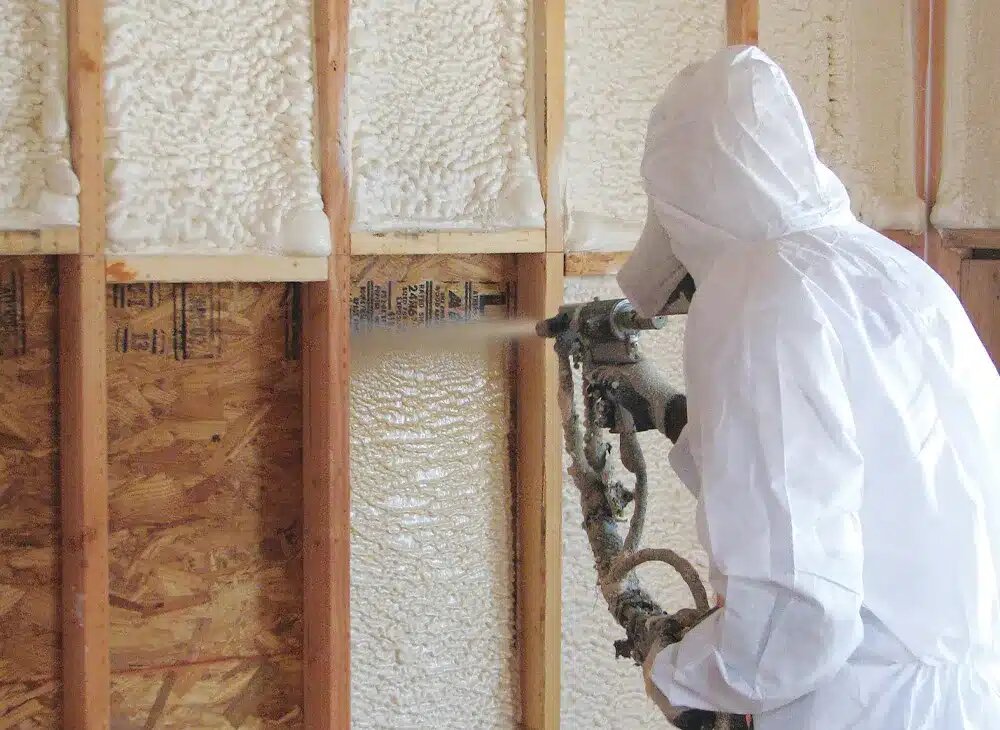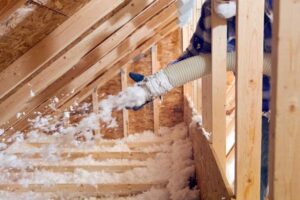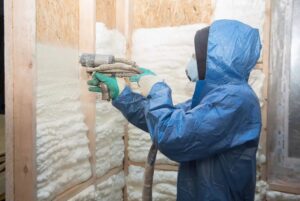When it comes to improving home comfort and energy efficiency in Smyrna, GA, two popular insulation options are often at the forefront: blown-in insulation and spray foam. Both of these materials offer distinct advantages, but understanding which one is the best fit for your home can depend on various factors, including climate, budget, and specific insulation needs.
In this article, we’ll compare blown-in insulation and spray foam insulation in Smyrna, GA, discussing the key benefits, potential drawbacks, and how each type of insulation works to help homeowners in Smyrna make an informed decision.
What is Blown-In Insulation?
Blown-in insulation, also known as loose-fill insulation, is made from materials like fiberglass, cellulose, or mineral wool. As the name suggests, this insulation is “blown” into the spaces in your home, filling gaps, cracks, and other hard-to-reach areas that other types of insulation might miss.
Blown-in insulation is typically used in attics, walls, and ceilings and provides excellent coverage. It’s especially effective for homes with irregularly shaped cavities or existing insulation that needs to be topped off.
Key Benefits of Blown-In Insulation
- Cost-Effective: Blown-in insulation is often less expensive to install compared to spray foam, especially when covering large areas.
- Good Air Sealant: It reduces the potential for drafts and keeps conditioned air inside, helping lower energy costs.
- Environmentally Friendly: Certain materials, like cellulose, are made from recycled paper products, making it an eco-friendly option.
What is Spray Foam Insulation?
Spray foam insulation, on the other hand, is applied as a liquid that expands when sprayed into place. It hardens into a foam that fills every crevice, crack, and cavity, creating a strong thermal barrier. There are two main types of spray foam: open-cell and closed-cell foam, each with different insulation properties.
Key Benefits of Spray Foam Insulation
- Superior Air Sealant: Spray foam expands as it’s applied, filling gaps, cracks, and voids. It creates an airtight seal, making it highly effective in preventing air leaks.
- Higher R-Value: Closed-cell spray foam offers a higher R-value per inch, making it more effective at insulating in a smaller space.
- Water Resistance: Closed-cell foam is water-resistant, providing added protection against moisture and mold in areas like basements or crawl spaces.
Blown-In Insulation vs. Spray Foam: A Side-by-Side Comparison
Here’s a quick comparison table to help you see the differences between the two insulation options:
| Feature | Blown-In Insulation | Spray Foam Insulation |
|---|---|---|
| Cost | Lower initial cost | Higher initial cost |
| R-Value | Moderate to high (depending on material) | Very high, especially with closed-cell foam |
| Air Sealant | Good air sealant, but not airtight | Excellent air sealant, airtight |
| Moisture Resistance | Vulnerable to moisture absorption (cellulose) | Water-resistant (especially closed-cell) |
| Energy Efficiency | Energy-efficient, especially in attics | Very energy-efficient with minimal air leakage |
| Application Area | Ideal for attics, walls, and ceilings | Ideal for attics, walls, basements, crawl spaces |
| Longevity | Long-lasting if maintained | Very durable and long-lasting |
Things to Consider Before Choosing Insulation
1. Climate Considerations in Smyrna, GA
Smyrna, GA, has a humid subtropical climate with hot summers and mild winters. This means insulation needs to handle both heat retention in winter and cool air in summer while also addressing moisture issues in the humid climate. Spray foam, particularly closed-cell foam, is often recommended for areas with high moisture levels due to its resistance to water and mold.
2. Budget and Installation Costs
Blown-in insulation tends to be more affordable upfront compared to spray foam, which can have a significantly higher installation cost. However, spray foam’s superior air-sealing and higher R-value can lead to long-term savings on energy bills, potentially justifying the higher cost for some homeowners.
3. Energy Efficiency Goals
If your primary goal is to maximize energy efficiency and minimize air leaks, spray foam insulation is the better choice. Its ability to create an airtight seal is unparalleled, making it especially effective for areas prone to drafts and moisture. However, for homes that already have good air sealing and for those on a tighter budget, blown-in insulation services can provide excellent energy savings without the higher cost.
Pre-Installation Checks
Before installing either type of insulation, it’s important to conduct a few key assessments to ensure the best results:
- Ventilation: Make sure your attic or crawl space has proper ventilation to prevent moisture buildup, which can lead to mold and mildew. Spray foam can sometimes limit airflow, so it’s important to evaluate your home’s current ventilation system.
- Existing Insulation: If you already have insulation, check if it’s settling or damaged. Blown-in insulation is a good option for topping off existing layers, while spray foam may be more appropriate for completely re-insulating your home.
- Moisture Control: Consider the moisture levels in your home, particularly in basements and crawl spaces. Closed-cell spray foam is the ideal choice for moisture-prone areas.
Common Homeowner Questions
1. How long does blown-in insulation last?
Blown-in insulation can last for decades if installed properly and maintained. However, it can settle over time, reducing its effectiveness. This is less of a concern with spray foam, which maintains its volume and effectiveness longer.
2. Is spray foam insulation worth the higher cost?
For homeowners who prioritize energy efficiency and long-term savings, spray foam insulation is an excellent investment. The airtight seal it provides can reduce energy bills significantly, making it a cost-effective option in the long run.
3. Can I install these insulation types myself?
Blown-in insulation can be installed by homeowners with the right equipment, but it’s often best handled by professionals to ensure the right amount of insulation is applied. Spray foam, due to its specialized application and chemical properties, is always best installed by trained professionals.
4. Can spray foam be used in all areas of my home?
Yes, spray foam can be applied in most areas of the home, including attics, crawl spaces, basements, and walls. However, it is important to ensure that the application is done properly to avoid moisture buildup and ensure proper ventilation.
Bonus Tips for Homeowners
- Consider Hybrid Solutions: Some homeowners combine both insulation types for different areas of their homes. For example, spray foam in hard-to-reach areas like crawl spaces or gaps, and blown-in insulation for large attic spaces.
- Check for Rebates and Incentives: Many utility companies in Smyrna offer rebates or incentives for upgrading to energy-efficient insulation. This can help offset the higher upfront cost of spray foam insulation.
- Insulation Thickness Matters: The R-value is affected by the thickness of the insulation layer. Ensure that your insulation is applied to the correct depth to meet local code requirements and optimize energy efficiency.
Frequently Asked Questions About Home Insulation
1. What’s the difference between open-cell and closed-cell spray foam?
Open-cell spray foam is softer and more flexible, with a lower R-value. It’s ideal for areas where moisture is not a concern. Closed-cell spray foam is denser, with a higher R-value and greater moisture resistance, making it ideal for humid environments.
2. How does insulation impact my home’s resale value?
Good insulation improves energy efficiency, comfort, and overall home value. Homes with high-performance insulation, like spray foam, can attract buyers who prioritize energy savings and long-term comfort.
3. Can spray foam be used for soundproofing?
Yes, spray foam is effective at reducing sound transmission between rooms due to its dense, air-sealing properties.
4. Is there a difference in energy savings between blown-in and spray foam?
Spray foam typically offers greater energy savings because it forms a complete seal, preventing air leaks. Blown-in insulation can still be very energy-efficient but may not provide as complete of an air barrier.
Finding the Right Insulation Expertise
Choosing the best insulation for your home in Smyrna is key to maximizing energy efficiency, comfort, and long-term savings. Both blown-in insulation and spray foam offer significant benefits, but understanding the specific needs of your home is essential.
For homeowners considering professional guidance or installation, Makeover Insulation offers expert services in energy-efficient insulation solutions, helping you determine the best option for your needs.
Readers can learn more about Makeover Insulation’s services:
- Phone: (470) 664-5300
- Email: [email protected]
- Website: Makeover Insulation







